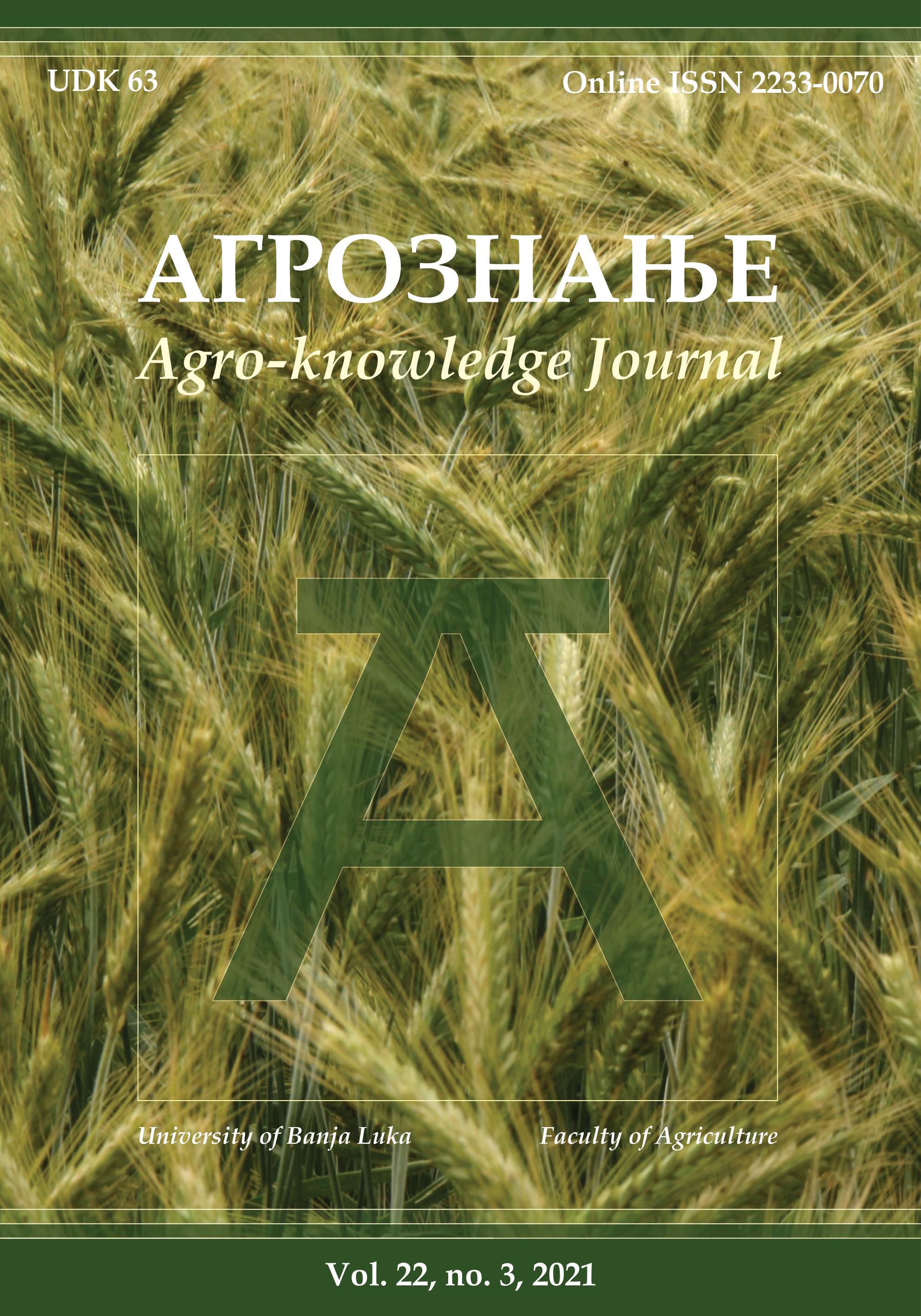Effect of nest and floor eggs with visually clean shells on hatchability and chick quality in broiler breeders
Утицај јаја снесених у гнијезду и на поду са визуелно чистом љуском на валивост и квалитет пилића тешког линијског хибрида
DOI:
https://doi.org/10.7251/AGREN2103077VAbstract
The aim of this study is to determine whether the site of oviposition has an impact on the results of incubation of broiler hatching eggs. In order to determine this, eggs laid in the nest, eggs laid in the nest and then placed on the floor to cool and eggs laid on the floor were compared. All eggs had a visually clean shell, including eggs laid on the floor. A total of 1,800 eggs from a 59-week-old Cobb 500 parent flock were examined, divided into three groups (n = 600) with 4 replicates (150 eggs per replicate). Compared to nest eggs, floor eggs had significantly higher weight loss (p<0.05), lower hatchability of set eggs and total embryonic mortality (p<0.01), as well as a lower number of first grade chicks per incubator tray (p<0.05). The percentage of contamination differed significantly between groups and it was the highest in floor eggs and the lowest in nest eggs (p<0.01). Nest eggs placed on the floor did not differ statistically significantly from nest and floor eggs in hatchability, total mortality and number of first grade chicks per incubator tray, although these eggs achieved more favourable results compared to floor eggs (p>0.05). The applied treatments did not affect the weight and length of the chicks (p>0.05). This research confirmed that floor eggs, despite their clean shell, have lower hatchability and a higher percentage of contamination than nest eggs, which emphasizes the importance of maintaining hygiene in nests and preventing the appearance of floor eggs in order to ensure the maximum number of eggs suitable for incubation.
Key words: hatching eggs, eggshell cleanliness, floor eggs, hatchability, chick quality

